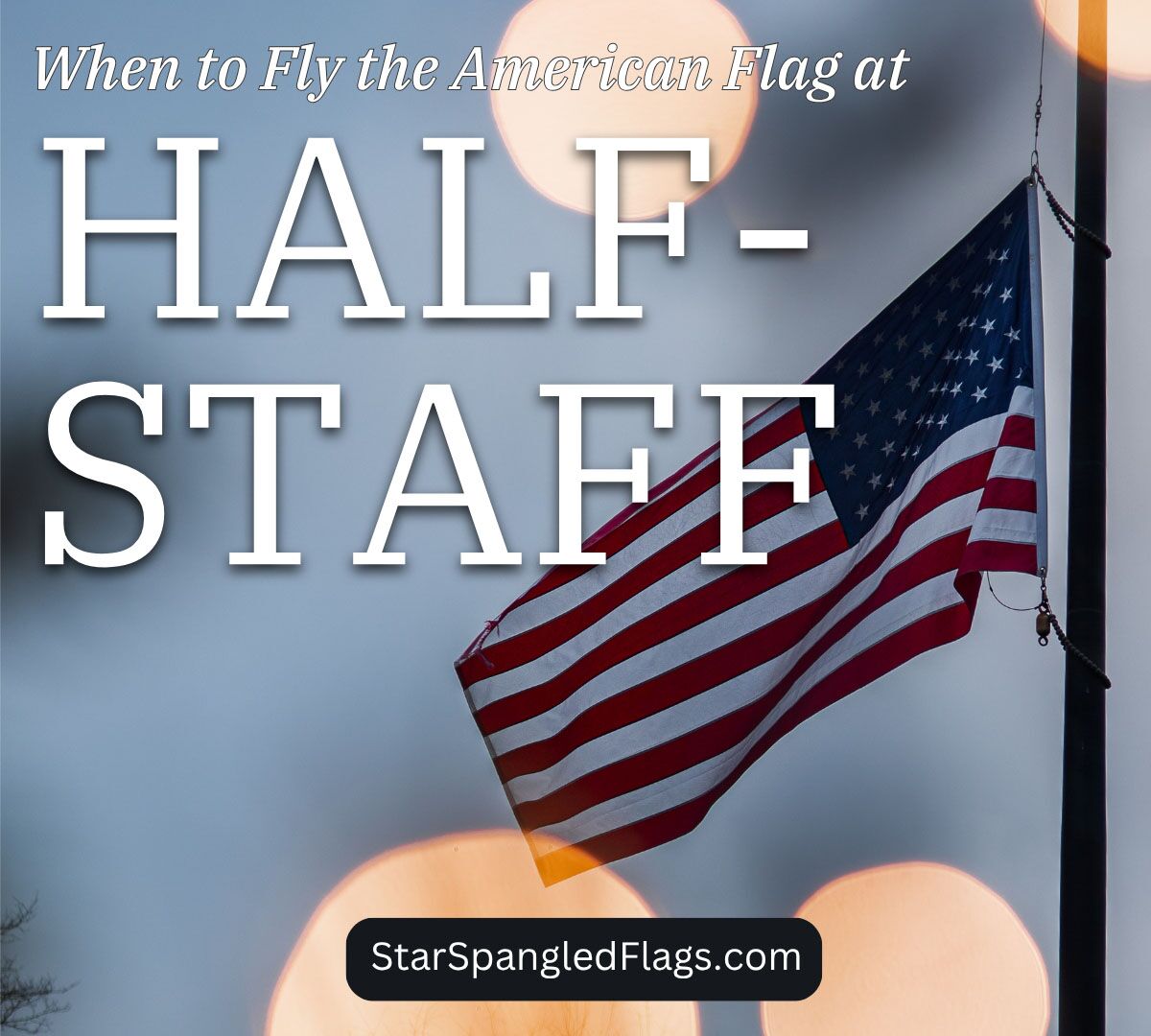Lowering the American flag to half-staff signifies respect during times of mourning. The President of the United States declares this for the whole country, while the governor makes the call for the state.
About Half-Staff Flags
Some people assume that it’s illegal to fly the American flag at half-staff on a day that has not been proclaimed by the President and/or state governor, but this isn’t true. According to Wikipedia, there is no prohibition or restriction against private businesses or government municipalities which prevent them from flying the American flag at half-staff as a sign of respect. Nonetheless, some people argue that flying the flag at half-staff on days which have not been proclaimed for this practice defeats its intended purpose.
Dwight David “Ike” Eisenhower (34th President of the United States) was responsible for issuing the first proclamation of flying the American flag at half-staff. He made this first proclamation on March 1, 1954, creating a standardized format of dates and times on which the flag should be flown at half-staff for all federal buildings and military bases.
Here are some of the days on which federal statutes provide that the American flag be flown at half-staff:
- Peace Officers Memorial Day (May 15)
- Memorial Day
- National Korean War Veterans Armistice Day
- Patriot Day
- First Sunday in month of October (beginning of Fire Prevention Week)
- National Pearl Harbor Remembrance Day
- Death of a president or former president (American flag flown at half-staff for 30 days)
- Death of a vice president (American flag flown at half-staff for 10 days)
- Death of Supreme Court associate justice, member of the Cabinet, former vice president, or the majority and minority leaders of the Senate and House of Representatives.
- Death of Senators, members of Congress, or territorial delegates
How to Fly the American Flag at Half-Staff
To fly the American flag at half-staff, you should begin by hoisting it to the top of the staff, at which point you can lower it about halfway between the top and bottom — and area that’s most commonly referred to as “half-staff.”
It’s important to note that the American flag should be raised to the top of the staff before lowering when in half-staff position. In other words, when you get ready to take down a flag at half-staff, first hoist it to the top of the staff and then lower it to the ground. This is done as a means of showing respect during a period of mourning.
Consider Sharing
If this post has helped you, please take a moment to share it with someone you know in your social accounts or email. The more people who know this information, the better America will be.
About the author

Barry Mason is a proud third-generation American whose grandfather served in World War II. Born and raised in small-town Tennessee, Barry developed a deep appreciation for American history and traditions from an early age, learning about the sacrifices made by previous generations. Barry has spent over a decade writing about flag etiquette, patriotic traditions, military history, and the stories behind America's most cherished symbols. When he's not researching the fascinating history of Old Glory, you can find Barry volunteering at veterans' events, coaching youth baseball, or exploring America's national parks with his family. A firm believer in supporting American manufacturing and small businesses, Barry is passionate about celebrating the craftspeople who keep American traditions alive. He lives with his wife and two children in a home where the American flag flies proudly every day. Favorite quote: "Freedom is never more than one generation away from extinction." - Ronald Reagan


